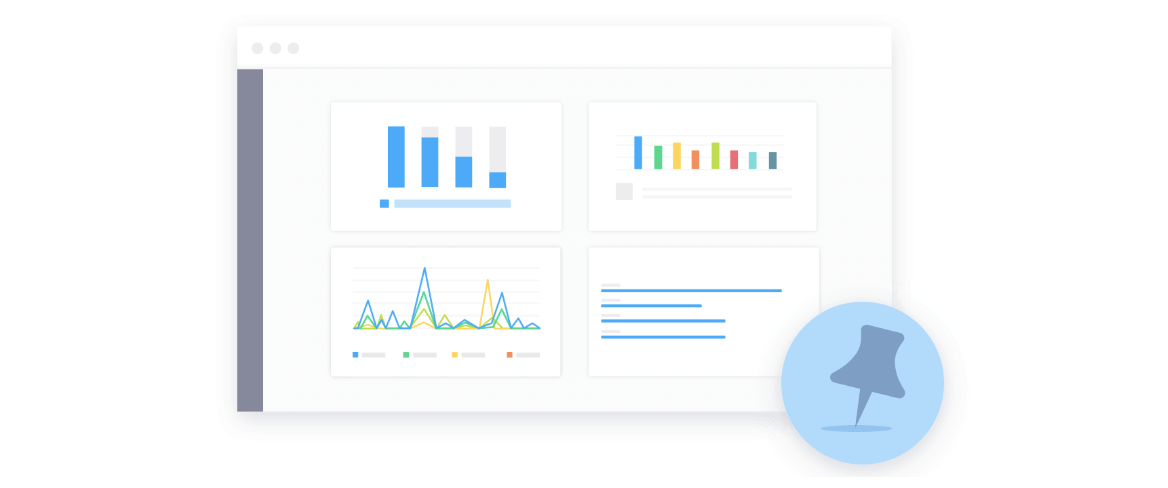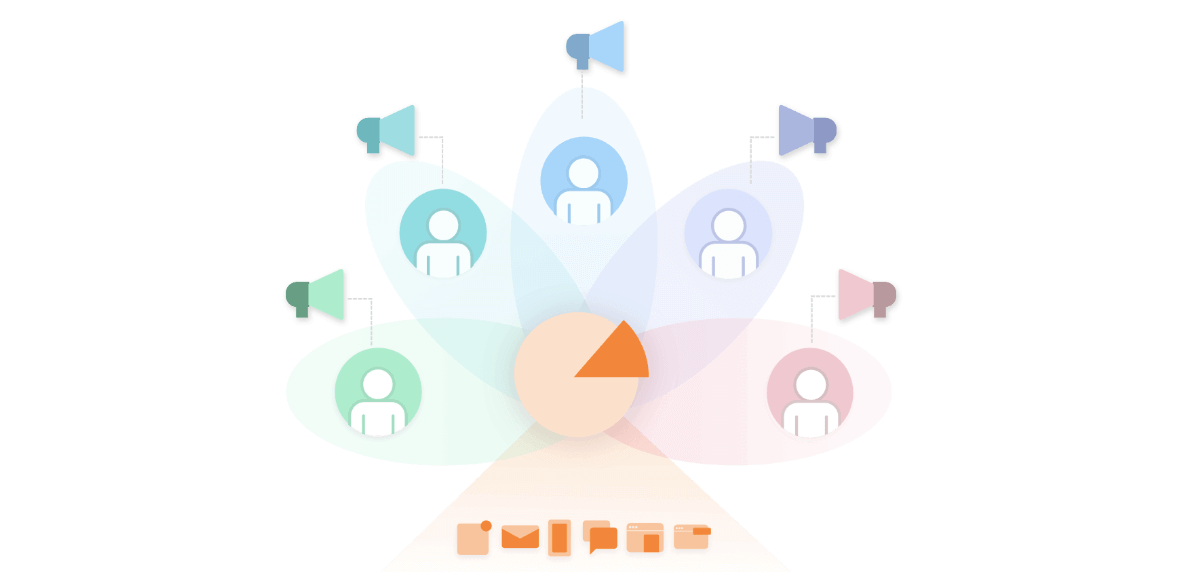There are 4.92 billion mobile users globally. That’s 66% of the total population. And global mobile data traffic is projected to increase nearly 3x between 2018 and 2021.
The massive popularity of mobile devices is intricately connected to how personal they are. They are personal assistants, digital wallets, portable entertainment, work terminals, and social outlets wrapped into a single, pocket-sized device. And we rely on them so much we reach for them up to 150 times a day.1
Mobile apps can be incredibly beneficial tools for both the end user and the app developer. They gather a ton of valuable information about customers’ interests, values, and habits. And they represent an opportunity to connect with customers in deeply personal, meaningful ways.
But to realize all these benefits, mobile marketers have to collect, analyze, and interpret user data correctly and responsibly.
What is Mobile Data Collection?
What has your smartphone done for you today? Counted steps? Deposited a check? Reminded you of a friend’s birthday? Recorded meeting notes? Navigated you to an appointment? Delivered dinner?
Each of those actions requires your apps to track, access, and analyze your information.
Smartphones contain a multitude of sophisticated sensors, from barometers and gyroscopes to GPS navigation and ambient light sensors. Not to mention things like biometrics. Even simple, low-end “dumb phones” can use SMS marketing to collect data by sending out questions and surveys, prompting users to reply with a short response.
All of these technologies provide mobile data collection methods for apps so they can use your data to enrich your user experience.
Why is Mobile Data Gathering Important for Your Business?
Data helps you understand what makes your users tick: what motivates them, what they’re interested in, what they value.
Data lets you personalize not only message content, but channel, delivery time, frequency, language, and more, so that you can connect with users in a more meaningful way.
In short, better data = greater profits.
But no conversation about mobile data collection would be complete without discussing the importance of privacy.
It’s your responsibility to not only ensure that customer data stays safe, but that users are aware of how you use, store, and share their personal information.
Yet according to Gartner,2 25% of businesses aren’t sure what constitutes acceptable and unacceptable use of mobile data, posing a major risk to their brand’s reputation.
It’s of paramount importance that you safeguard your users’ private data. As mobile technology grows more advanced, customers expect even better protection — not more innovative ways to misuse their personal data.
Mobile Data Collection Best Practices
Don’t just do what you’re legally required to do. Be proactive about earning and keeping your customers’ trust. A few guidelines:
1. Only collect the data you need to provide the best possible user experience. Don’t just collect data for the sake of collecting data — have a goal and a plan for it.
For instance, don’t track location data unless it’s relevant to the user experience: tagging photos by location, searching for nearby restaurants or theaters, providing GPS-enabled directions, etc. A flashlight app or GIF keyboard shouldn’t need location access.
2. Only collect data with express user consent. Users should know what kind of data you’re accessing, and be able to opt in (and out). To encourage opt ins, communicate the benefits for the user: “Enable contacts access to share photos with friends” is much more effective than “Enable contacts? Yes/No”
3. Transparency breeds trust. Be 100% honest and upfront with users about what type of data you’re collecting, and what you’re using it for. Keep your privacy policy up-to-date and readily available in the app, on your website, and even on your App Store pages.

Image: Nception on the Apple App Store
4. Use plain English. Users are paying more attention to safeguarding their private data, so Terms of Service and Privacy Policies are actually being read instead of simply clicked through.
Don’t try and hide details on data collection in fine print legalese or a 50-page-long Terms of Service. This will only make users wary of your methods and intentions.
Yes, these are legal documents and will necessarily include some formal terminology. But it shouldn’t be unintelligible to the average user. The last thing you want is for customers to feel tricked or taken advantage of.
5. Use data to benefit your customer, not just your company. Understanding your users’ interests and habits is highly valuable for your company, helping you improve both conversions and retention.
But make sure that users see the benefits too. (Hint: that benefit shouldn’t be “We can sell to you more effectively.”)
You can’t just throw them a discount and expect them to think it’s a fair trade for their browsing history and personal data. Benefits mean real value: more relevant updates, less spam, and personalized offers and notifications.
6. Implement written policies. This includes guidelines on how data will be collected, stored, encrypted, accessed, shared, and (at some point) deleted.
7. Know your legal obligations. Depending on your location, there are strict US federal, state, local, and international rules and regulations that your company must comply with. If and when these change, it’s your responsibility to know the details and follow them.
What Type of Mobile Data Should Your Business Collect?
Michael Darden of IBM* recommends tracking at least four key types of mobile data:
Performance Data – Crash rates, load times, bugs. These have a tremendous impact on user experience, and you need to know them.
Platform Data – Understanding which operating systems your app is used on is important information for your product development and UI/UX teams. On what screen size are the majority of your users viewing your app? What kind of adoption or engagement trends do you see on each platform?
Engagement Data – Number of active users, click-through rates, conversion rates, session length and frequency — this kind of engagement data gives you valuable insights into how people use your app, which of your engagement campaigns are working, and where you can improve.
Revenue Data – How much revenue is your app generating, either from sales of the app itself or from in-app purchases? Knowing this information is key for your business development team to track progress against business goals, make accurate forecasts, and improve marketing ROI.
Choosing a Mobile Data Collection App
There are dozens of mobile analytics and mobile data collection tools available, with more being introduced every day. How do you choose the right one for your business?
When evaluating mobile data collection software, ensure it has:
Real-Time Insights

Who are your users? How do they use your app?
Mobile marketers need to act quickly to engage users with timely, personalized user experiences. And that means a tool that can collect, process, and analyze billions of user data points in seconds.
The best mobile marketing platforms can identify friction points where users drop off, highlight user engagement and conversion trends, reveal campaign performance, and even predict uninstalls.
Advanced User Segmentation

Not all of your users are the same, and each one has their own motivations for engaging with your app. Segmentation lets you divide your user base into groups to target them with more effective, personalized engagement campaigns.
By analyzing users’ in-app behavior and profile data, you can use demographics, geolocation, and preferences plus their historic and current app activity to create advanced user segments and engage them in more meaningful ways.
CleverTap uses sophisticated machine learning segmentation features like predictive segmentation and RFM analysis to automatically create user segments for you, based on everything from frequency of use and purchase history to personal interests.
Cross-Channel Engagement

Now that you have detailed user segments, you can build multi-channel engagement campaigns that span push notifications, in-app messages, email, and SMS. When your customers receive a consistent experience and messaging on every marketing channel, their relationship with your brand gets stronger.
The best mobile analytics solutions will provide insights into the most effective engagement channel for each user segment, so you can use the right channel, the right device, and the right message – all at the right time to improve conversions and retention.
In the market for a leading mobile marketing and mobile data collection platform? CleverTap brings together real-time user insights, an advanced segmentation engine, and easy-to-use mobile marketing tools in one solution.

See how today’s top brands use CleverTap to drive long-term growth and retention
Shivkumar M 
Head Product Launches, Adoption, & Evangelism.Expert in cross channel marketing strategies & platforms.
Free Customer Engagement Guides
Join our newsletter for actionable tips and proven strategies to grow your business and engage your customers.















































